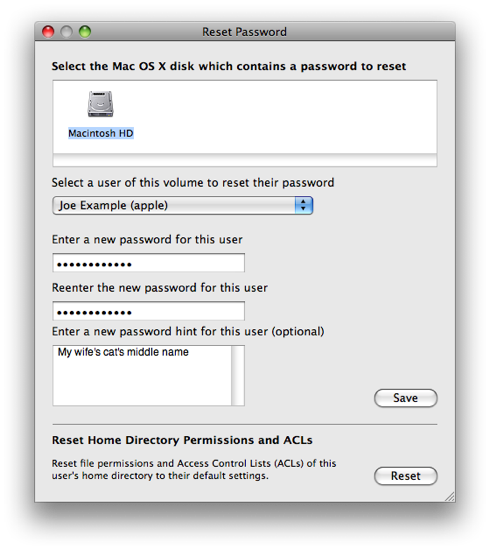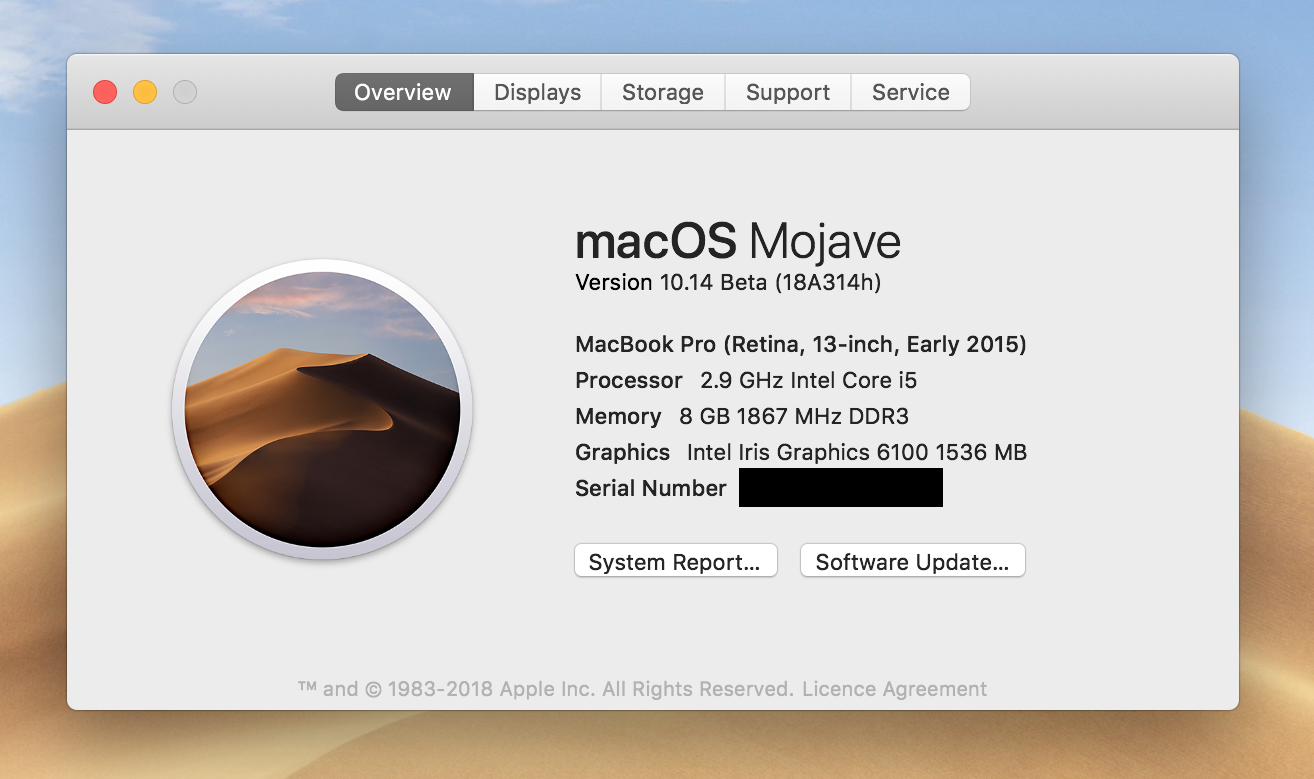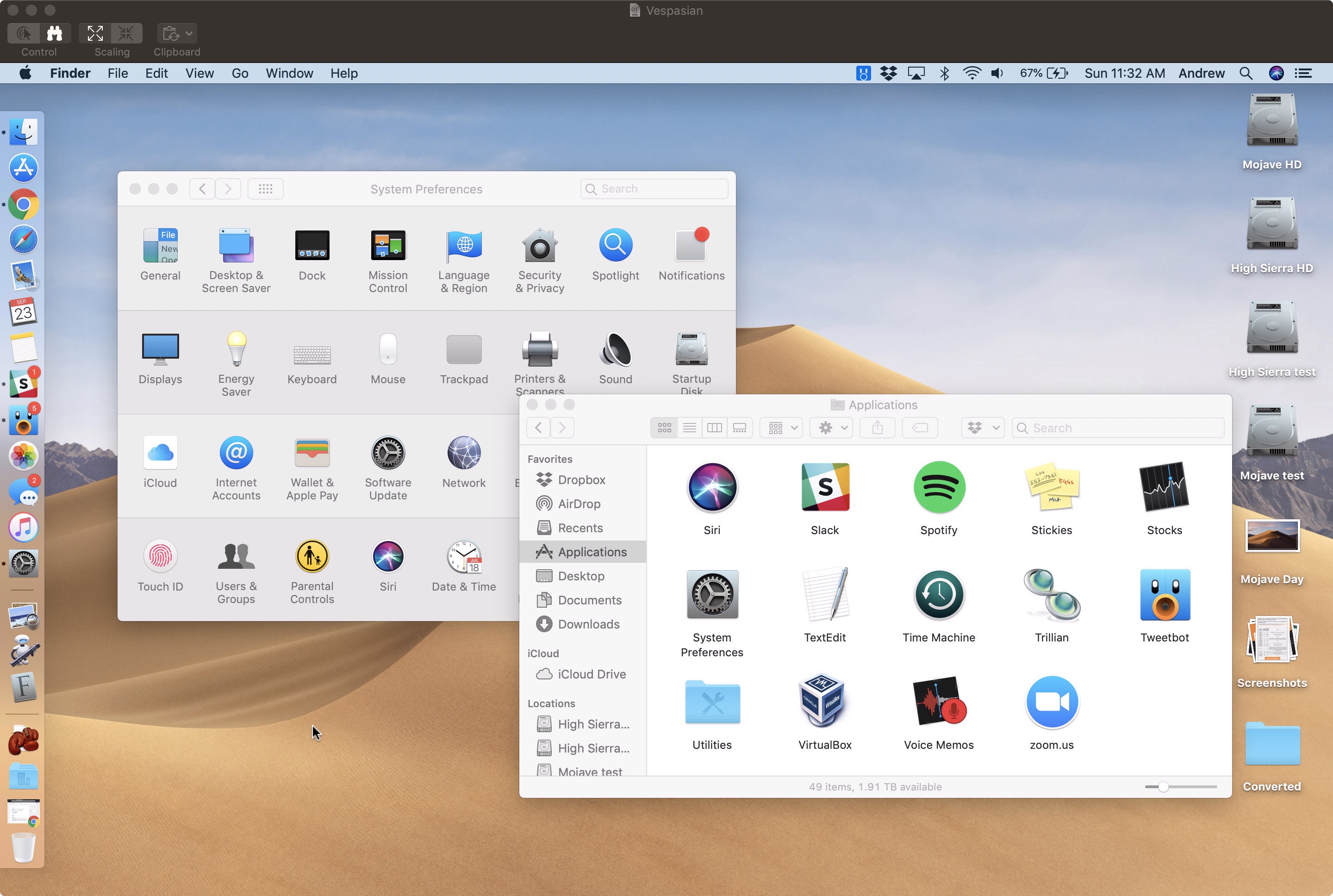How To Hack A Mac Password Mojave
The password of your macOS user account is also known as your login password. It's the password that you use to log in to your Mac and make certain changes, such as installing software.

Change your password
The Mojave 10.14.1 update does NOT install properly on unsupported machines, and could result in an unbootable OS. If you want to install the 10.14.1 update (and are not currently running 10.14.1), perform the following steps:. Download the latest version of Mojave Patcher. Download the installer using the Tools menu of Mojave Patcher.
If you know your password and can use it to log in to your account, you can change your password in Users & Groups preferences:
- This is a MacBook Pro running macOS Mojave 10.14.6 with FileVault enabled. In my case the problem is that at the login page, when the computer starts, the admin user account doesn't appear but after logging in as standard user I see that there is an admin.
- Step 3: In the FileVault window, you can set a password by typing it in twice, as well as set a password hint in case you forget it. Step 4: Once you confirm the password and hint, the drive will be encrypted, and only that password can open it. Also, you can only unlock it on a Mac, as mentioned earlier.
- Choose System Preferences from the Apple menu, then click Users & Groups.
- Select your user name from the list of users.
- Click the Change Password button, then follow the onscreen instructions.
Reset your password
If you don't remember your password, or it isn't working, you might be able to reset it using one of the methods described below. But first try these simpler solutions:
- Make sure that you're typing the correct uppercase or lowercase characters. If your keyboard has Caps Lock turned on, the password field shows a Caps Lock symbol .
- If the password field shows a question mark, click it to display a password hint that might help you to remember.
- Try to log in without a password. If that works, you can then add a password by following the steps to change your password.
- Try to log in with the Apple ID password that you use for iCloud. If you just changed that password and the new password isn't working, try the old password first. If that works, you should be able to use the new password from then on.
Reset using your Apple ID
In some macOS versions, you can use your Apple ID to reset your login password. At the login screen, keep entering a password until you see a message saying that you can reset your password using Apple ID. If you don't see the message after three attempts, your account isn't set up to allow resetting with Apple ID.
- Click next to the Apple ID message, then follow the onscreen instructions to enter your Apple ID and create a new password. You'll be asked to restart when done.
- Log in with your new password.
- Determine whether to create a new login keychain.
Download Mojave Mac
Reset using another admin account
If you know the name and password of an admin account on your Mac, you can use that account to reset the password.
- Log in with the name and password of the other admin account.
- Choose System Preferences from the Apple menu, then click Users & Groups.
- Click , then enter the admin name and password again.
- Select your user name from the list of users.
- Click the Reset Password button, then follow the onscreen instructions to create a new password:
- Choose Log Out from the Apple menu.
- Log in to your account using your new password.
- Determine whether to create a new login keychain.
Reset using the Reset Password assistant (FileVault must be on)
If FileVault is turned on, you might be able to reset your password using the Reset Password assistant:
- Wait up to a minute at the login screen, until you see a message saying that you can use the power button on your Mac to shut down and start up again in Recovery OS. If you don't see this message, FileVault isn't on.
- Press and hold the power button until your Mac turns off.
- Press the power button again to turn on your Mac.
- When the Reset Password window appears, follow the onscreen instructions to create a new password.
If you need to connect to Wi-Fi, move your pointer to the top of the screen and use the Wi-Fi menu to connect. To exit without resetting your password, choose Apple menu > Restart. - When done, click Restart.
- If you were able to reset your password with the Reset Password assistant, log in to your account using your new password.
- Determine whether to create a new login keychain.
Reset using your Recovery Key (FileVault must be on)
If FileVault is turned on and you have a FileVault Recovery Key, you can use that key to reset your password.
- At the login screen, keep entering a password until you see a message saying that you can reset your password using your Recovery Key. If you don't see the message after three attempts, FileVault isn't on.
- Click next to the message. The password field changes to a Recovery Key field.
- Enter your Recovery Key. Use uppercase characters, and include the hyphens.
- Follow the onscreen instructions to create a new password, then click Reset Password when done.
- Determine whether to create a new login keychain.
If you can't log in with your new password after restarting your Mac, take these additional steps:
- Restart again, then immediately hold down Command-R or one of the other macOS Recovery key combinations until you see the Apple logo or a spinning globe.
- When you see the macOS Utilities window, choose Utilities > Terminal from the menu bar.
- In the Terminal window, type
resetpassword, then press Return to open the Reset Password assistant pictured above. - Select ”My password doesn't work when logging in,” then click Next and follow the onscreen instructions for your user account.
Create a new login keychain, if necessary
After resetting your password and logging back in to your account, you might see an alert that the system was unable to unlock your login keychain. This is expected, because the passwords for your user account and login keychain no longer match. Just click the Create New Keychain button in the alert.
If you didn't see an alert about your login keychain, or you see other messages asking for your old password, reset your keychain manually:

- Open Keychain Access, which is in the Utilities folder of your Applications folder.
- Choose Preferences from the Keychain Access menu, then click the Reset My Default Keychain button in the preferences window. After you enter your new password, Keychain Access creates an empty login keychain with no password. Click OK to confirm.
If you don't see a Reset My Default keychain button, close the preferences window and select the “login” keychain from the left side of the Keychain Access window. Press the Delete key, then click Delete References. - Choose Log Out from the Apple menu to return to the login screen.
- Log in to your account using your new password. Your account password and login keychain password now match again.
If you still can't log in
How To Get Mac Os Mojave
If you still can't log in with your password, contact Apple Support for help.
So you have set up your Mac and a password to protect it. The next morning, you wake up, switch on your Mac and wait for the login page to appear. When you are on the login screen, you realize you do not remember your password even after seeing the hint. This is where you will get stuck if you don’t have logged in with your Apple ID and set up extra layers of recovery. Even if have those recovery options, it’s pretty hard for you to do as a Windows user. Here is How to Reset Forgotten Password of macOS Mojave Virtual Machine.
If you don’t use a password manager or had not noted on your own yet, you will most likely forget which is hard to remember those complex passwords. If you’ve forgotten your password, you can’t really access your Mac, but don’t worry, you can reset it. Luckily, it’s pretty easy on Mac and even easier than resetting your Windows account password. All it takes is booting into recovery mode and entering your new password, but to do that, you are not alone, we’ll walk you through it.
Of course, this method will also work with other macOS versions, including High Sierra, Sierra.
Step One: Boot Into Recovery Mode
If you sign into your Mac with an Apple ID, you can reset your password with Apple ID’s password. The options that appear on your screen will walk you through the process. For which, you will go through a verification process that you will need to have access to one of the services or phone. Here is How to Reset Forgotten Password of macOS Mojave Virtual Machine.

If you have not signed in with your Apple ID, however, you can reset your password with this trick.
To get started, we are going to enter into the special recovery mode, that’s what we have done before. Booting into recovery mode on a real Mac is a bit different from booting into recovery mode in a virtual machine whether VMware or VirtualBox. However, it might be a little complicated, but not with the steps and shots.
Step Two: Reset Your Account Password
Once you are in recovery mode, from the menu, select Utilities, and from the drop-down options, click on Terminal.
macOS Utility
How To Hack In A Mac Password
In the Terminal, type resetpassword without space and enter.
This launches password reset tool where you can change your password without old password. When you are done, click Next.
Reset Password
The password for the account has reset. Now restart to sign in with your new password so click Restart.
Step Three: Change Settings to The Default One
Your Mac will now restart and oops, you are again on the recovery page. To boot into the Mojave, switch off the virtual machine since the settings are not available when the virtual machine is on.
On the recovery window, hover your mouse at the top. When the menu appears, select VM > Power > Shut Down Guest. You can also right-click on the virtual machine name and directly shut down.
Shut Down VM
When the virtual machine turned off, open virtual machine settings.
From there, select the recovery hard disk and click on Advanced from the options.
Virtual Machine Settings
Clicking the Advanced will bring up Hard Disk Advanced Settings, set the node to SATA 0:2 or SATA 0:3 and click OK.
Mac Mojave Upgrade
Now without leaving the settings, select the next disk that Mojave is installed on and click on Advanced. Then change the device node to SATA 0:0 and hit OK on the virtual machine settings to save the changes.
Set Node
Step Four: Sign Into Your Mac With The New Password
While the Mac has been reset completely, you can try signing in with your new password.
At this point, we are going to switch on the virtual machine since we want to boot into Mojave instead of recovery mode.
Now you should be able to log in with your new password, simply type it and hit Enter.
Sign In
And you will get straightly into your Mac with your password.
If you want to protect yourself from others using this trick on you, you need to enable FileVault encryption. When you have enabled FileVault, you will not be able to reset your password at least this way. However, there is a recovery method, which is a whole different process, so don’t try forgetting your password.
While your Mac is in a virtual machine on your Windows PC, it’s likely not everyone has physical access to it. But if someone does, there’s nothing you could do to stop them even if you have a password, FileVault encryption or even Firmware password set up. These protections won’t be useless and will make it harder for them to access. But at the end of the day, you may probably get your Mac all wiped away. After all, if you have activated Activation Lock, this may prevent them from using your Mac.
So it’s good to prevent unauthorized people access your Mac neither physically nor virtually. Also, it’s good to tighten and maximize your security so if someone unexpectedly gets access to it, you should not lose your files.